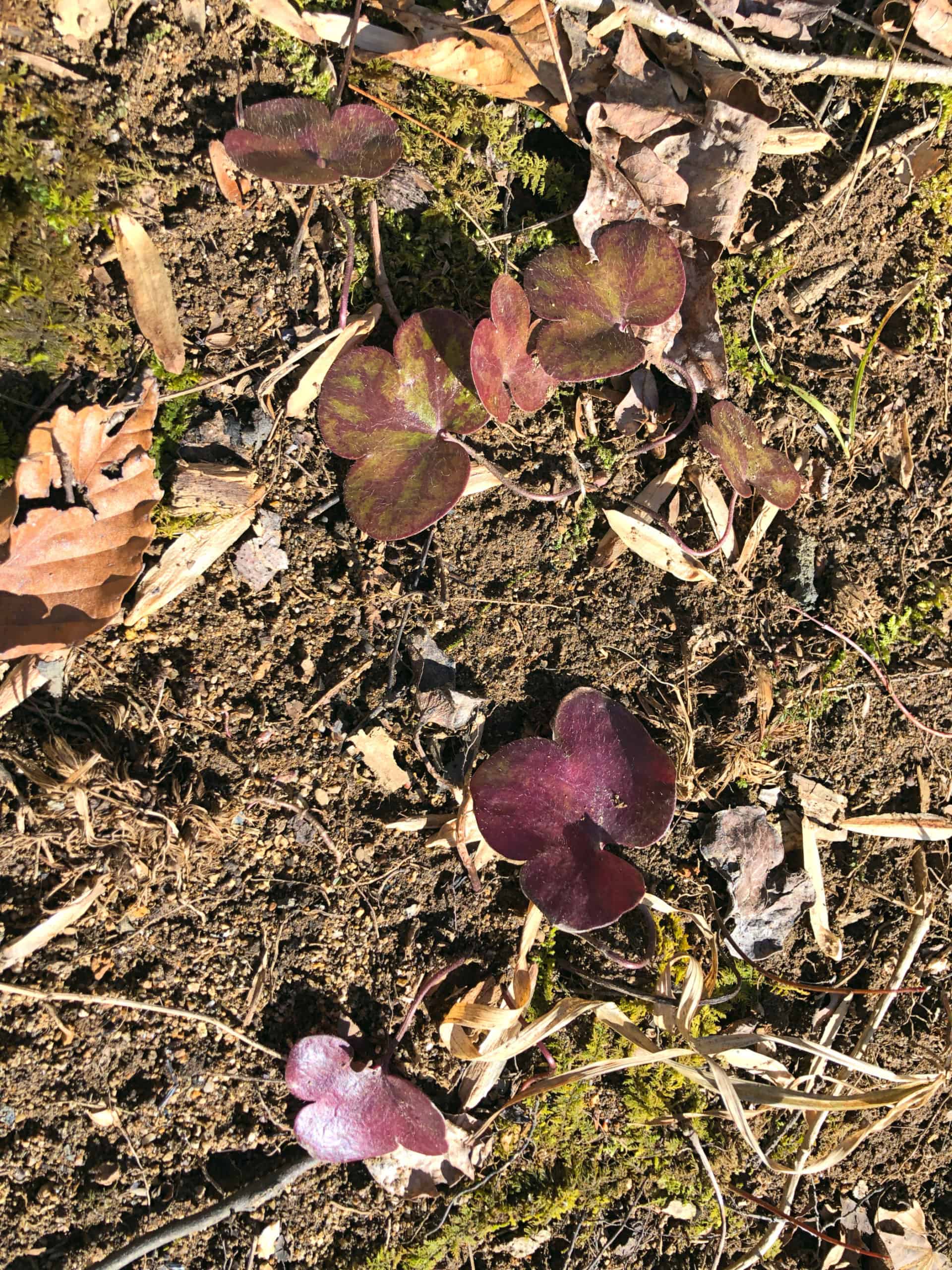Crow’s Nest: Spring on the scene
By Daniel Barringer, Preserve Manager.
Now that the yellow-spotted salamanders and wood frogs have crossed local roads to get to vernal pools, the sounds of spring have arrived. Salamanders of course are silent but there are several places you can go on the preserve to hear the ruckus of wood frogs, and others where spring peepers also are calling.
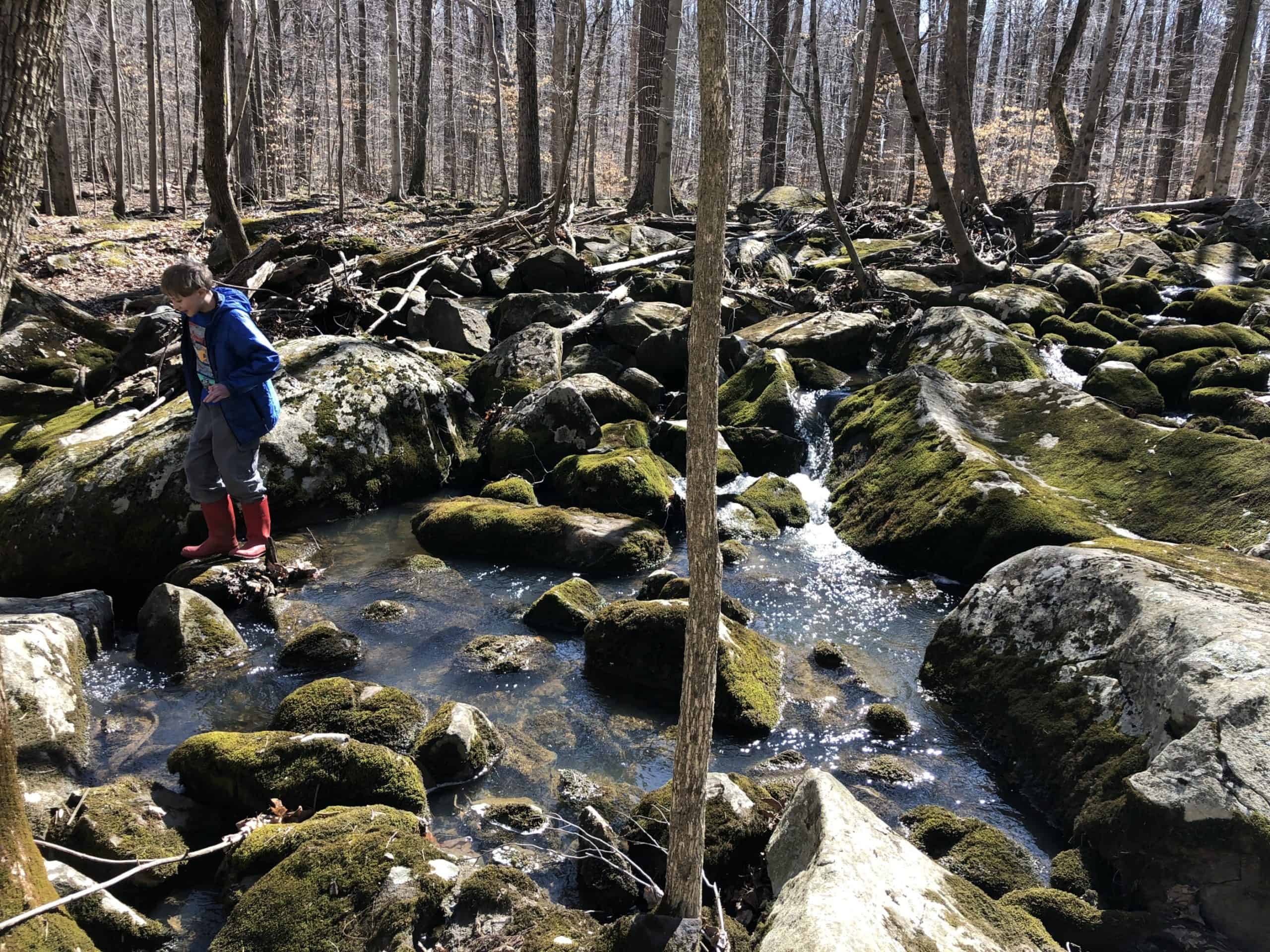
You can hear wood frogs (Rana sylvatica, now named Lithobates sylvaticus) calling at a few places along the Creek Trail, near where the vernal pools are that serve as their breeding sites. Yellow spotted salamanders eggs can also be found in many of the same pools.
Another good place to hear and see wood frogs is along the Horse-Shoe Trail where it passes through Crow’s Nest Preserve. Park on Trythall Road and carefully cross to the west side to follow the old railroad bed. As you hike deep into the woods you’ll find several pools thrashing with the activity of wood frogs. This trail is level and smooth for quite a ways in before it gets rough, so it makes a great hike in spring when the sun warms you, or in summer when the trees have leafed out and offer shade. Mine Run flows through a boulder field (above). The only thing that is louder than the wood frogs at this time of year is the water flowing over the rocks.
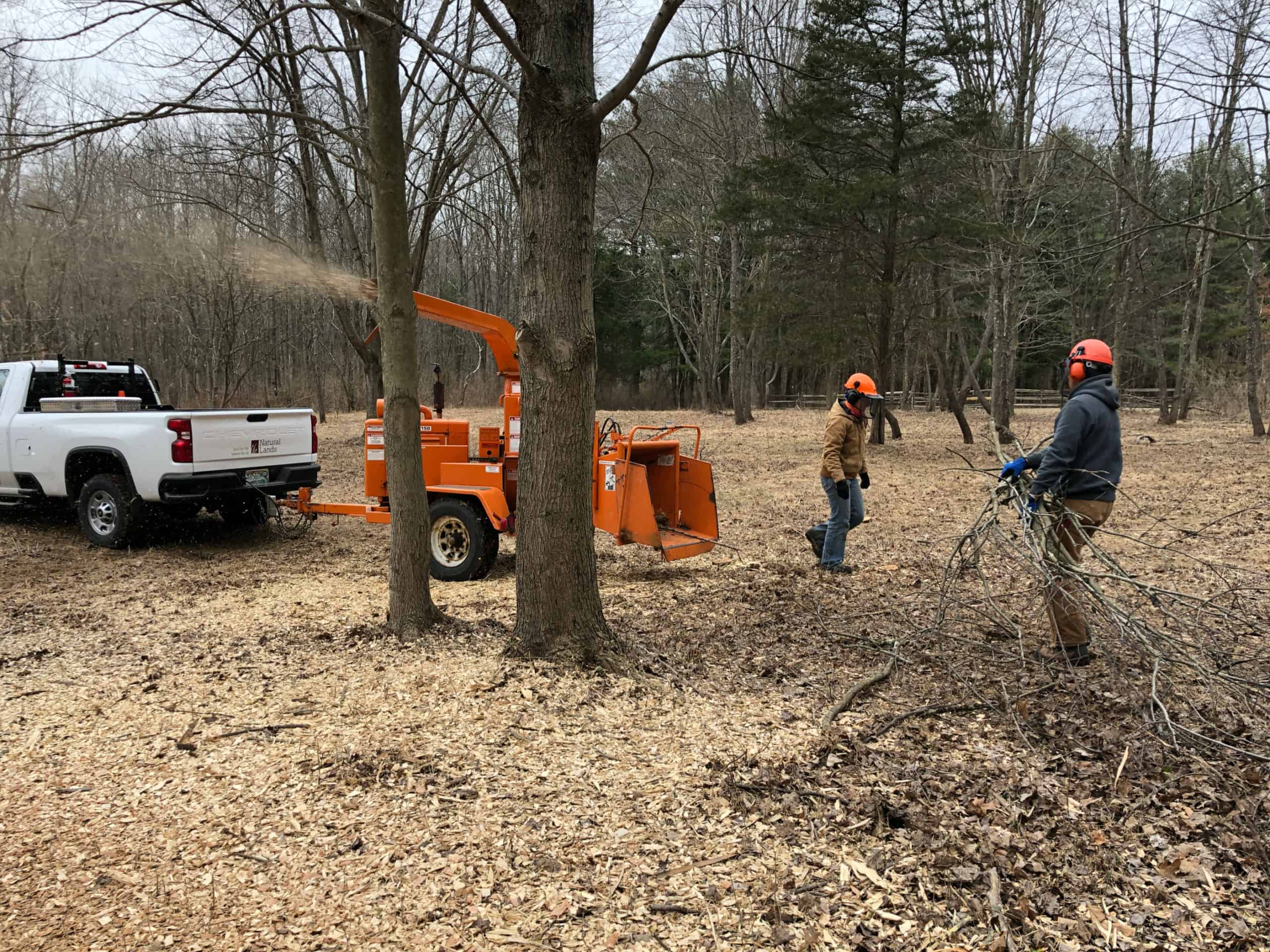
The last few weeks, now that the snow has finally melted, have been busy for us at the preserve. We fit in most of the winter projects we couldn’t get done with snow on the ground in this short window. We mowed all of those meadows that won’t be receiving prescribed fire this year (we didn’t do any burns last year due to the Covid-19 pandemic, but we think we can do it safely this year, so we’ve scheduled last year’s meadow management for 2021). We also cleaned up the brush from trees that Aubrey and Alison had thinned in the savanna at the beginning of winter (above). Many of these were ash that were dead or dying and would have fallen in the meadow there, creating an impediment to mowing or burning to maintain that semi-open habitat. The rotation of prescribed fire and mowing, along with lots of work to manage the invasives autumn olive and pale swallowwort, has created the ideal conditions for milkweed (Asclepias syriaca and A. purpurascens) and butterfly weed (A. tuberosa). This in turn makes it a great place to visit for monarch butterflies—come back in mid-summer to see that show!
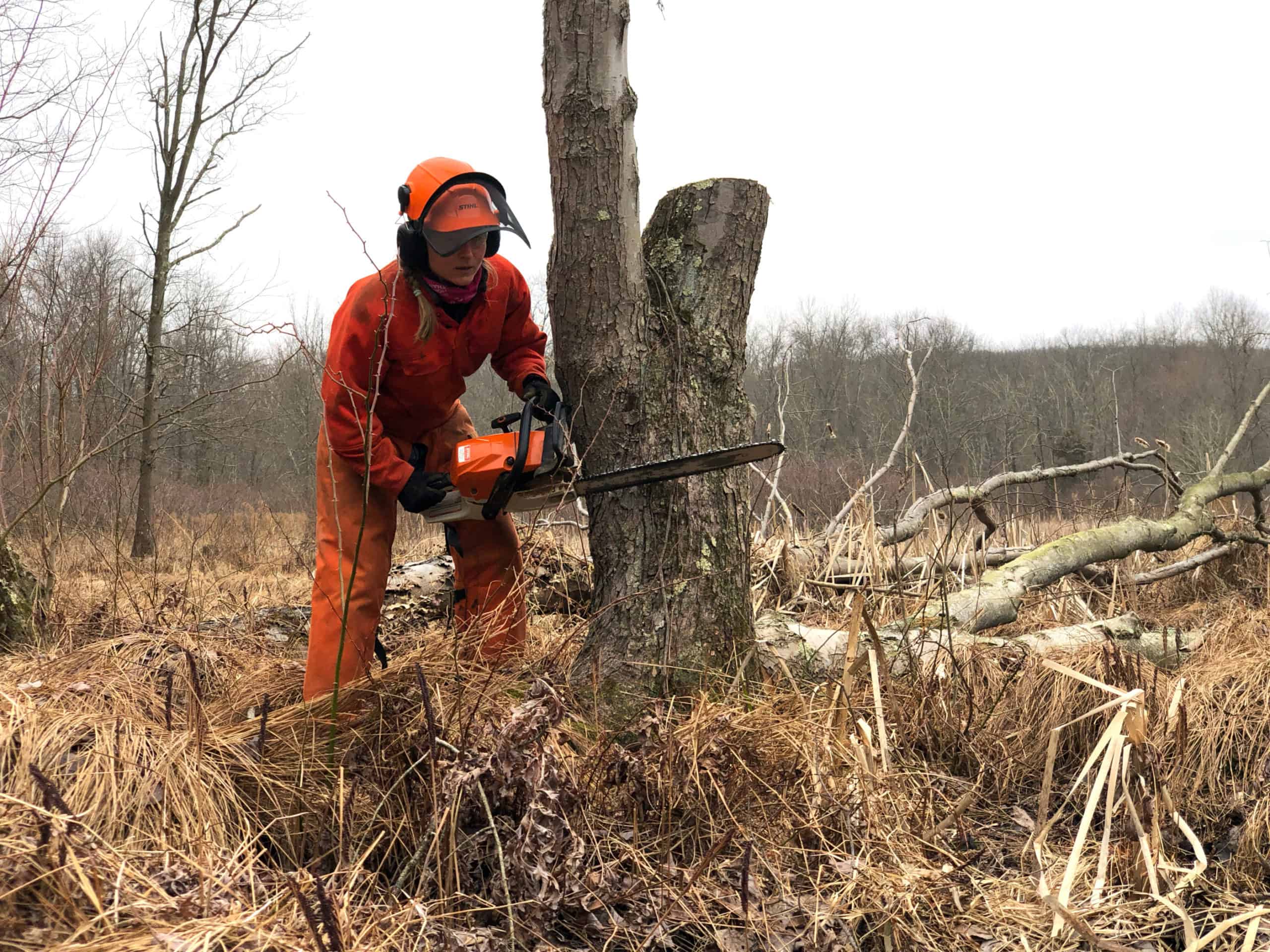
Above, Alison cuts down a red maple to improve habitat in a tussock-sedge wetland. Left unmanaged this area would undergo succession to become a red-maple swamp and those species that need full sun would decline. (Historically, these conditions would have been maintained by large herbivores such as bison or created by beaver flooding that kills many trees; our cutting of red maples and brushcutting multiflora rose, combined with prescribed grazing, helps keep this habitat open.)
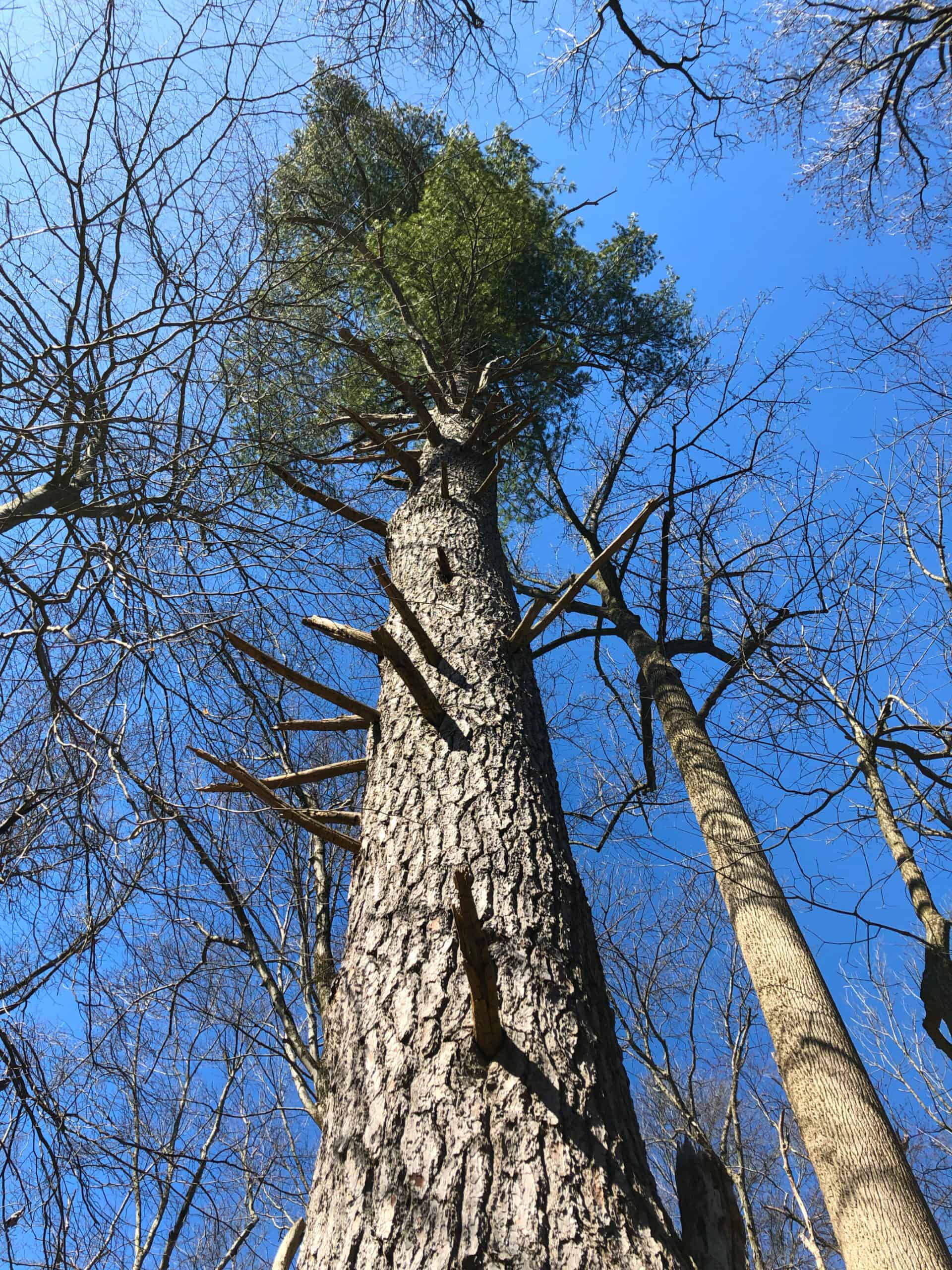
What’s green right now? White pine growing in the Deep Woods is evergreen. These old trees remind us why these were also called the shipmast pine, though those largest trees on the east coast were cut for the Crown—that’s how long they’ve been gone. Also, mosses and ground pines (clubmosses—Lycopodium) are evergreen. Eastern red cedar is common in farm hedgerows and successional areas. In addition to evergreen Christmas fern found throughout our Deep Woods, we also have the common polypody, also appropriately called “rock cap.”
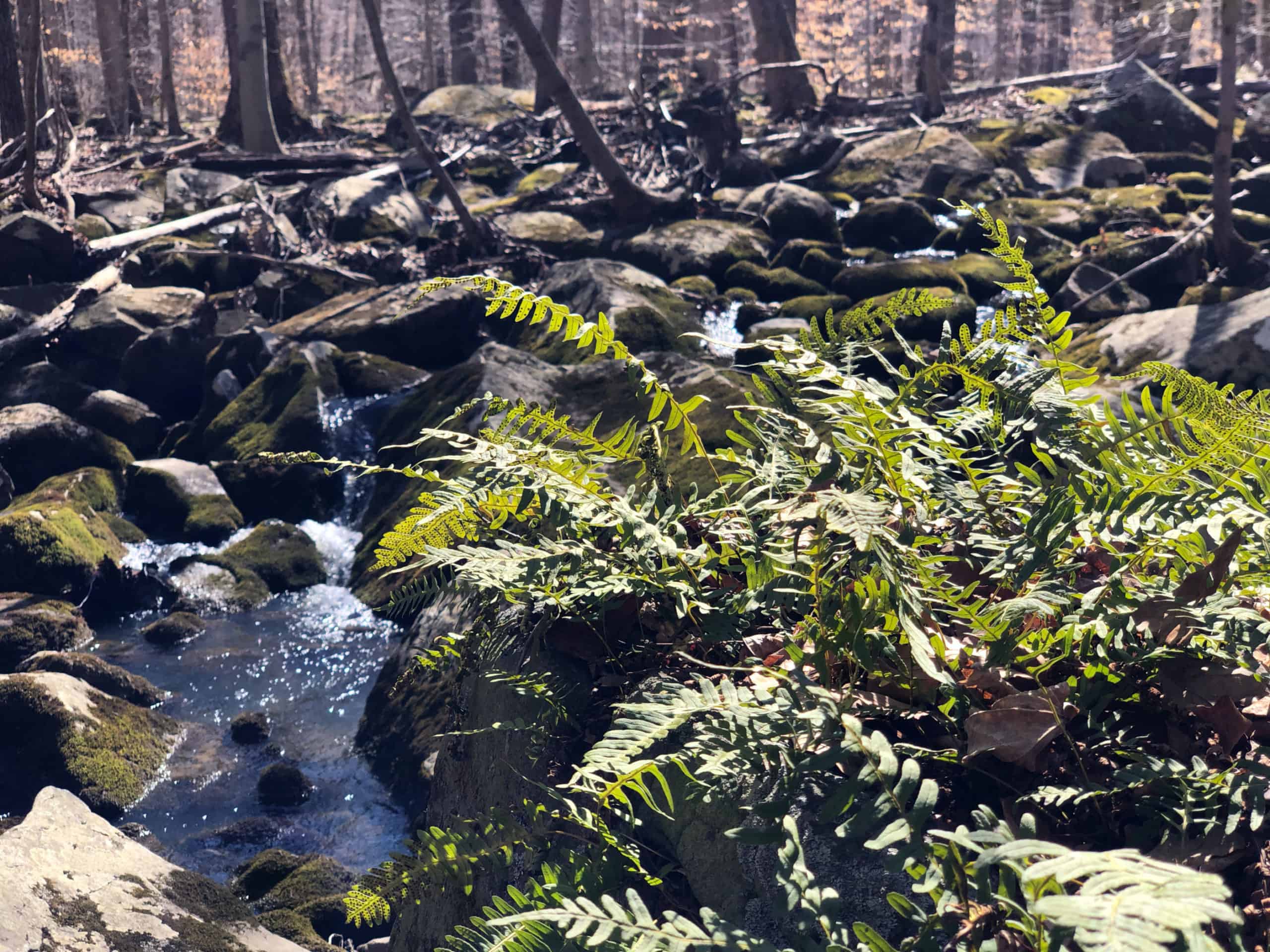
What’s blooming right now? Those same red maples, which dominate the floodplain of French Creek, have given the otherwise gray woods a blush of red (the red maples we’re cutting are only those in only a small wetland habitat area; red maple remains a dominant species on the preserve). Silver maples have similar flowers except once open, their stamens are generally greenish yellow or only occasionally red. These species are the major source of food for honey bees at this time of year because little else is available this early in spring.
Alder catkins are elongating and these male flowers will soon release pollen. I mentioned skunk cabbage in an earlier post, still blooming now as spring warms us. Below, it’s still a bit early for the blooms of the earliest of our spring ephemeral wildflowers, round-lobed hepatica (Hepatica americana). But it won’t be long now!
